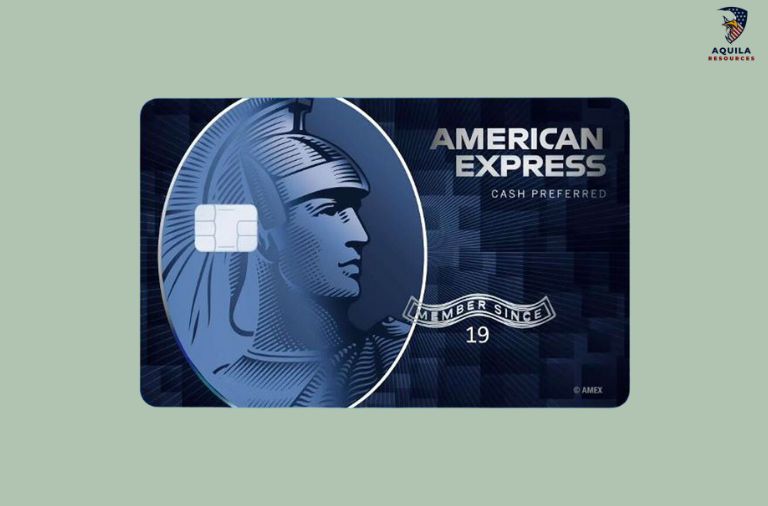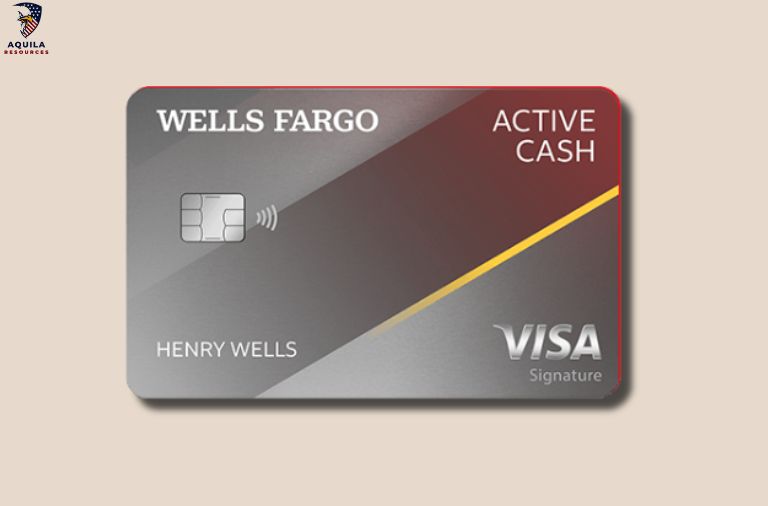Are you looking for the Best Credit Cards for Families? If Yes, You are at the right place.
In this article, We are sharing all the information about Best Credit Cards for Families.
There are many different types of families, but they all have one thing in common: an extensive list of expenses. Having a credit card that offers rewards and can help cover the costs of raising children or caring for a shared home can help cover these costs and get you back on your feet.
This is why we’ve put together a list of the top Credit Cards for Families in several important spending categories. The following cards were selected based on their primary features, which include rewards, bonus offers, and introductory APR rates. We also looked at any fine print benefits and fees charged and how families spend their money.
Having a credit card that can be relied upon when dealing with the costs of kids’ activities, grocery store trips, gas, and numerous other monthly expenses is essential. Having easy-to-earn and redeem rewards is also helpful since parents generally have limited time.
What are The Best Credit Cards for Families?
Contents
- 1 What are The Best Credit Cards for Families?
- 2 How to Find the Best Credit Cards for Families?
- 3 Best Credit Cards for Families
- 4 How to Choose the Best Credit Cards for Families?
- 5 Types of Credit Cards for Families
- 6 FAQs

The type of card that works best for you and your family will depend on your individual goals. The information you need to decide is here, regardless of whether you’re looking for cash back, traveling domestically or internationally, staying in luxury hotels, or stretching your points at budget hotels.
How to Find the Best Credit Cards for Families?
Credit cards for families are plentiful, and plenty of excellent options exist. It can also be difficult to pick a card when so many options are available. The following steps will help you choose a credit card that fits your family’s needs:
Choose Your Credit Card Type
Several credit card types are popular with families, including cash back cards, 0% APR cards, travel cards, and balance transfer cards. If you are interested in other types of credit cards, you may find them useful.
Choosing a credit card type is as easy as deciding what your biggest need is. Do you want to save money in a simple way? If you want to earn cash back on your credit card, you need a cash rewards card. Would you like to get rid of your credit card debt? It may be possible to help you with that by transferring your balances. Are you a frequent traveler? When you use a credit card that does not charge a foreign transaction fee, you can save quite a bit on your travel expenses.
Choose a Few Credit Cards
The next step is to choose a few potential credit cards based on the type of card you want.
Consider the features most important to you when choosing a credit card, such as the cash back rate or the sign-up bonus new cardholders will receive once their account is opened. Consider these features when choosing a card.
Choose a Credit Card and Apply for It
Comparing your finalists side by side will help you decide which one you like best. Once you have decided what card you want, you must apply online.
Credit cards are one of the best ways to get credit, and they all offer great benefits. Choosing the right card for your family will save you the most money. Make a list of the benefits you’ll use, determine if any of the cards charge an annual fee, and calculate how much value each card will provide.
Best Credit Cards for Families
We’re going to start with some fun credit card options for you and your family. The following credit cards offer cash-back or points and miles that are good fits for families. Based on your family’s spending habits and redemption goals, we will divide the rewards into categories that allow you to earn and redeem the most.
Are you looking for cash back you can use right away for your family? There’s no need to worry. Do you want to save up some points to take your family on a cheap vacation? You can count on us for that as well.
Blue Cash Preferred Card from American Express

A Blue Cash Preferred Card offers 6 percent cash back on U.S. supermarket purchases up to $6,000 per calendar year and 1 percent after that—and what family doesn’t need to spend money at the supermarket?
Families can also earn rewards on other common expenses, such as 6 percent back on select streaming services, 3 percent back on gas stations and transit, and 1 percent back on other eligible items.
Card Details
- Welcome offer: A $250 statement credit when you spend $3,000 during your first six months as a member
- Intro APR: First-year purchase and balance transfer APRs are 0 percent (after that, a variable ongoing APR of 19.24 percent to 29.99 percent will apply).
- Rewards: A 6 percent discount at U.S. supermarkets (just under $6,000 in a year, then 1 percent); a 3 percent discount at gas stations; a 3 percent discount at public transit such as taxis, rideshare, buses, trains, parking, and tolls; and a 1 percent discount on other purchases.
- Annual fee: $95 for the first year, $0 for the second year
Pros & Cons of Blue Cash Preferred Card from American Express
| Pros | Cons |
| We offer a market-leading cash-back offer of 6 percent for supermarket purchases of up to $6,000 per year (then 1%). | The first year is free; after that, you’ll pay $95 a year. |
| The card will offer you $7 back each month when you pay $9.99 or more monthly on a Disney Bundle subscription (subject to auto-renewal; enrollment required) – a savings of $84 in a year. | A supermarket’s cash-back reward program is limited to $6,000 of annual spending with a 1 percent reward thereafter. |
| An intro APR of 0 percent on purchases and balance transfers for 12 months (then 19.24 percent- 29.99 percent variable ongoing APR) can be a great way to help families manage debts. | Boosted rewards are not available at superstores and warehouse clubs, such as Costco and Target. |
Wells Fargo Active Cash Card

The Wells Fargo Active Cash Card provides a straightforward, valuable way to earn rewards on everyday purchases for busy families. With no caps or categories to keep track of, there’s one less thing to worry about. Furthermore, you can take advantage of the introduction APR offer and the welcome offer.
Card Details
- Welcome offer: $200 in cash rewards after making $500 in purchases within three months of opening an account
- Intro APR: The intro APR for purchases and eligible balance transfers is 0% from the date of account opening for 15 months (then the variable APR becomes 20.24 percent, 25.24 percent, or 29.99 percent). You must transfer your balance within 120 days in order to qualify for this offer, and you will be charged a 3 percent intro fee (up to 5 percent thereafter, with a minimum fee of $5).
- Rewards: Earn 2 percent cash back on all purchases, regardless of spending category or limit
- Annual fee: $0
Pros & Cons of Chase Sapphire Preferred Card
| Pros | Cons |
| There are many ways to redeem 2 percent cash rewards, such as offsetting eligible purchases with a credit to a qualifying Wells Fargo credit card, checking account, mortgage account, or even a gift card. Wells Fargo ATMs offer $20 increments for cash rewards withdrawals. | This is a poor choice for family travel because it has a 3 percent foreign currency conversion fee and lacks travel protections, features, and credits that are available with other cash back cards. |
| When you make purchases or transfer balances within the first 120 days, you’ll get 15 months at a 0 percent interest rate (followed by 20.24 percent, 25.24 percent, or 29.99 percent ongoing variable APR). | A supermarket’s cash-back reward program is limited to $6,000 of annual spending with a 1 percent reward thereafter. |
| Cardholders are covered for damage or theft of up to $600 each (subject to a $25 deductible). | Boosted rewards are not available at superstores and warehouse clubs, such as Costco and Target. |
Chase Sapphire Preferred Card

Chase Sapphire Preferred Card is the top travel rewards card, thanks to its generous sign-up bonus and additional redemption value. If you’re looking for travel rewards without a steep annual fee, the Sapphire Preferred may be the right card for you. The Chase Ultimate Rewards card earns 25 percent more points than a Chase cash card when redeemed via the Chase portal for travel. The value of points increases if you transfer them to a loyalty program with a high hotel or airline reward program.
Travel protections such as trip interruption and cancellation insurance, collision waivers on car rentals, baggage delay coverage, and trip delay reimbursement may be useful for families. Adding other Chase cards to your wallet later lets you combine points from all your cards into one bucket, which is one of the most compelling aspects of the Chase Sapphire Preferred Card.
Card Details
- Welcome, offer: Become eligible for 60,000 bonus Ultimate Rewards points after spending $4,000 within your first three months – worth $750.
- Rewards: You can earn up to $50 in Ultimate Rewards hotel credits when you purchase travel through Chase Ultimate Rewards; you can earn 3X points for dining and restaurant purchases, including delivery and takeout; you get 2X points for other travel purchases; you get 1X points for everything else.
- Annual fee: $95
Pros & Cons of Chase Sapphire Preferred Card
| Pros | Cons |
| The Chase Ultimate Rewards travel transfer partners offer the best value for your rewards redemption. | The company does not offer a low APR introductory offer that may aid families in paying down high-interest debt. |
| Chase Ultimate Rewards members can receive up to $50 as a statement credit for hotel stays. | It’s best to transfer points to travel partners for the highest value reward redemption. |
| The anniversary points bonus equals 10 percent of your prior year’s total spending on the card. | Boosted rewards are not available at superstores and warehouse clubs, such as Costco and Target. |
Chase Freedom Unlimited

The Chase Freedom Unlimited card offers families much value, including a lengthy introductory APR period for purchases and balance transfers. Restaurants and drugstores offer 3 percent back, and all purchases are earned 1.5 percent back. This is likely to be attractive to families. Chase Ultimate Rewards points are rewarded for all “cash back.”
Freedom Unlimited can contribute to your family’s travel rewards strategy: As with other Chase Ultimate Rewards-earning cards in your wallet, you can pool rewards. Freedom Unlimited is often recommended for the Chase Trifecta, which is a strategy of maximizing travel rewards earning and redemption by using three Chase cards.
Card Details
- Welcome offer. Take advantage of this cash back offer and get an extra 1.5% on every purchase (up to $20,000 spent in the first year) for up to $300 back. Chase Travel offers 6.5%, dining and drugstores offer 4.5%, and all other purchases offer 3%.
- Intro APR. There is a 0% intro APR on purchases and balance transfers for the first 15 months and an ongoing variable APR of 20.49 percent to 29.24 percent.
- Rewards: Chase will give you 5 percent cash back on Chase Travel purchases, 5 percent cash back on Lyft purchases, 3 percent cash back on dining out, takeout, and eligible delivery services, 3 percent cash back on drugstore purchases, and 1.5 percent cash back on other purchases.
- Annual fee: $0
Pros & Cons of Chase Freedom Unlimited
| Pros | Cons |
| There is no annual fee, and generous rewards programs are available, along with excellent travel protections and benefits. | The rewards value of a Chase Sapphire Prefrred card is beyond 1 cent each, so you’ll need a premium card to maximize your rewards. |
| In contrast to many balance transfer or intro APR cards offering few or no rewards, this card provides value beyond an intro APR offer. | When it comes to cash back cards, 1.5 percent cash back earns a decent return as part of a rewards program, but 2 percent cash back earns the best return. Cash back is available on all purchases with the Wells Fargo Active Cash Card. |
| A 3 percent foreign transaction fee is charged. |
Prime Visa

Family members who shop online are likely to do so at Amazon. The Prime Visa could benefit your family if you know your Amazon delivery driver by name. Amazon shoppers can earn a 5 percent cash back bonus for online purchases that include digital downloads, gift cards, and items sold by third parties on Amazon.com’s marketplace. As a customer of Amazon Style, Amazon Prime Video, or Kindle Unlimited, you can also earn 5 percent rebates on your purchases.
Families earn more with this card than just Amazon purchases. Whenever you purchase travel through Chase Travel or Whole Foods, you’ll earn 5 percent back. Boosted rewards can also be earned at gas stations and restaurants, as well as on public transportation and commuting, including rideshare.
Card details
- Welcome offer: An Amazon gift card worth $100 upon approval of your application
- Intro APR: None
- Rewards: You’ll earn 5 percent back on Amazon.com, Whole Foods, and travel purchased through Chase Travel; 2 percent back on groceries, gas stations, restaurants, and local transportation (including ridesharing); and 1 percent back on other purchases.
- Annual fee: Free, but Prime membership is required for top rewards of $139
Pros & Cons of Prime Visa
| Pros | Cons |
| You can earn 5 percent rewards on groceries, Amazon purchases, gas, and restaurant purchases. | This card’s non-Prime version earns just 3 percent on Amazon purchases without Prime membership; with Prime membership, it earns 5 percent on unlimited purchases. |
| It seems there is an endless number of things you can buy for your family on Amazon, thanks to its ever-expanding product catalog. | There is no annual fee, but a Prime membership costs $139 annually or $14.99 per month. |
| Besides collision damage waivers, roadside assistance is available, travel accident insurance is available, and extended warranty protection is available as well. | Chase Ultimate Rewards points are not earned with this card despite being issued by Chase. |
How to Choose the Best Credit Cards for Families?
The steps and considerations involved in choosing the right card for your family are similar to those that go into choosing a card for yourself:
- Know Your Credit Score: Your credit report will likely not look good if you have too many hard inquiries about it as a result of applying for a credit card. Make sure your credit score is at least good enough to qualify you for the cards you are applying for.
- Understand Issuer Rules: Each issuer’s rules vary, and some do not depend on your credit score when determining whether you will be approved for a card. For example, a Chase credit card may not be approved if you’ve opened five or more bank accounts within the last 24 months.
- Take Stock of Your Budget: The card you choose should be easy to use and fit well into your regular spending habits and rewards goals. There is no point in manipulating your finances or spending to fit a credit card. Decide on the right type of credit card to reward your existing spending instead.
- Consider the Fees: Make sure you don’t ignore any of the card’s terms that aren’t fun. Annual fees do offer some benefits, but they must outweigh the drawbacks. It’s important to understand what the interest rate will be if you plan to carry a balance.
- Make Sure You Can Meet the Welcome Bonus: Many reward cards advertise lucrative welcome bonuses, but to earn them, you must spend substantial amounts of money. Spending requirements can be difficult to meet, so consider timing your application around a large single purchase—like paying taxes or renovating your home—to earn a bonus.
Types of Credit Cards for Families
Credit cards come in various forms. The first step to finding a new one is to decide what type you want. We’ll tell you which types of credit cards are best for families and why.
Cash back credit cards
If you want to save money on all your expenses, cash back credit cards are perfect for you. Rewards are earned on purchases made with these cards. Alternatively, you can request a check if you want your cash back credited to your credit card account, deposited directly into your bank account, or credited to your credit card account.
There are cash back cards that offer a high rate, such as 2%, on all eligible purchases. Others offer bonus categories, such as 3% on gas or 6% on groceries. Your family may benefit from those if you have a few big monthly expenses.
Intro 0% APR Credit Cards
A credit card with an intro 0% APR is a great idea if you are expecting costly bills in the future. A 0% intro APR is offered on purchases with this type of card. You won’t be charged interest on any purchases you make during the intro period. An intro APR of 0% on purchases for 15 months gives you 15 months to pay off your bills without paying interest.
The 0% APR card is an excellent choice for covering major expenses, such as school supplies, medical bills, or sports equipment. Pay off the full balance before the intro period ends. If the remaining balance is not paid by the due date, the card issuer will charge interest.
Travel Rewards Credit Cards
When you’re planning an expensive trip or frequently taking your family on vacation, travel credit cards can be very useful. These cards allow you to make travel purchases and earn rewards. Depending on the card, travel rewards can be redeemed in different ways. Credit cards that earn points can be used to earn airline miles, hotel points, and hotel rewards.
The best travel credit cards for you can be found after you learn how they work and how to choose one. You can save money every time your family travels with this type of rewards card. The majority of travel cards don’t charge foreign transaction fees, so it’s a good idea to have one if you travel abroad with your family.
Balance Transfer Credit Cards
Credit cards with balance transfer offers are a good way for families to pay off their credit card debt. For a limited time, the APR on balance transfers is 0%. Balance transfer cards can also be used to transfer balances from high-interest credit cards. Once they have been transferred, you can pay them down with no interest during the intro period.
A balance transfer fee is usually associated with it (the standard amount is 3%). The difference in interest rates from 20% or more to 0% during the promo period is a small price to pay.
FAQs
What Credit Card Benefits are Helpful for Parents?
Parents can benefit from cash-back rewards, bonus offers on everyday purchases, and 0% intro APR offers with credit cards. As a result of all these benefits, parents may be able to save money on their regular expenses.
Can I Get a Credit Card for a Family Member?
Your credit card can be used by a family member who is added as an authorized user. You should check the terms and conditions of your credit card before using it since some charge authorized user fees. Credit card issuers have different requirements, so this will vary from one to another.
What is the Best Cash-Back Credit Card for My Family?
The benefits of cash-back are similar to stacking coupons and getting a discount on every purchase. You may need a different credit card depending on where you shop most often.















Add Comment